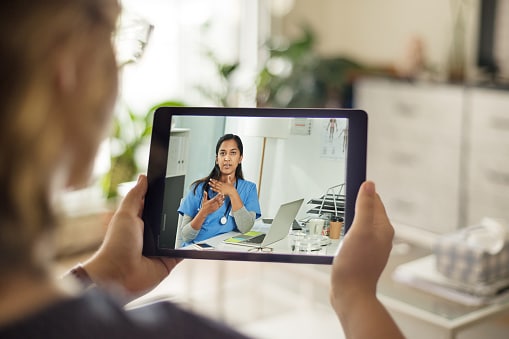Health Care Access, Telemedicine Access and Use, and Loss of Work Due to Illness
The Research and Development Survey (RANDS) is a platform designed for conducting survey question evaluation and statistical research. RANDS is an ongoing series of surveys from probability-sampled commercial survey panels used for methodological research at the National Center for Health Statistics (NCHS). RANDS estimates are generated using an experimental approach that differs from the survey design approaches generally used by NCHS, including possible biases from different response patterns and sampling frames as well as increased variability from lower sample sizes. Use of the RANDS platform allows NCHS to produce more timely data than would be possible using traditional data collection methods. RANDS is not designed to replace NCHS’ higher quality, core data collections. Below are experimental estimates of a selected number of key issues—loss of work due to illness with COVID-19, telemedicine access and use before and during the pandemic, and reduced access to specific types of health care due to the pandemic for three rounds of RANDS during COVID-19. Data collection for the three rounds of RANDS during COVID-19 occurred between June 9, 2020 and July 6, 2020, August 3, 2020 and August 20, 2020, and May 17, 2021 and June 30, 2021. Information needed to interpret these estimates can be found in the Technical Notes.
Experimental estimates show the percentage of U.S. adults who did not work for pay at a job or business, at any point, in the previous week because either they or someone in their family was sick with COVID-19. Data are available by age, race and Hispanic origin, sex, education, urbanization, and chronic conditions.
Experimental estimates show the percentage of U.S. adults who have a usual place of care and a provider that offered telemedicine in the past 2 months, who used telemedicine in the past 2 months, or who have a usual place of care and a provider that offered telemedicine prior to the coronavirus pandemic. Data are available by age, race and Hispanic origin, sex, education, urbanization, and chronic conditions.
Experimental estimates show the percentage of U.S. adults who were unable to receive selected types of medical care. Data are available by age, race and Hispanic origin, sex, education, urbanization, and chronic conditions.


